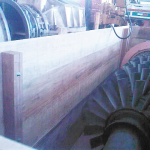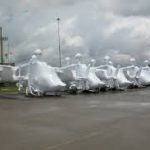Protecting all parts of an aircraft against corrosion is crucial, especially considering the safety factor, which is a major concern within the aviation industry.
Corrosion can and shall be prevented throughout all stages of an aircraft’s life cycle, through manufacturing, assembling, testing, storing, cleaning and overhauling.
The use of composite components has not eliminated the need for careful monitoring of aircraft with regard to corrosion.
V-Active technology allows the aircraft to be constantly protected, as opposed to the commonly used products, which can be potentially corrosive agents.
These are some of the applications of corrosion inhibitors within the Aviation industry:
- Cleaning key areas of the aircraft such as: Exhaust Trail Areas, Bilge Areas, Wheel Well and Landing Gear, Wing Flap and Spoiler Recesses, External Skin Areas, Water Entrapment Areas, Engine Frontal Areas and Cooling Air Vents, Helicopter rotor heads and gearboxes by using V-Active products such as LQS500, Organic Neutralizer and V-Active Cleaner
- Protection of electrical circuits by using V-Active Cleaner and V-Active Panel
- Protection against corrosion in enclosed areas and compartments of the aircraft by using V-Active Fluids and/or V-Active panels
- Lubrication for proper maintenance of rotor heads, gearboxes and hinges by using V-Active Additives and V-Active Protectives
- Protective fluids applicable before painting coatings by using V-Active Protectives
- Fogging compressor section of turbines by spraying V-Active water based fluids through borescopes
- Preservation of aircraft parts (such as Gas turbine exhaust and inlet) for storage by sealing cavities with V-Active shrink plastic
- Fogging pipes with V-active fluids and sealed with V-Active shrink plastic
- Packaging of aircraft parts inside crates treated with Woodactive


